Scientists Make An Unsettling Discovery While Investigating the Notre-Dame Fire
The Notre-Dame de Paris is one of the most iconic buildings in the Western world. The cathedral, considered to be one of the finest examples of French Gothic architecture, is home to numerous sculptures and other works of art that are some of the most famous in Paris.
On the 15th of April, 2019, Parisians watched in horror as flames engulfed the cathedral’s roof. Guards swiftly evacuated the building, and hundreds of firefighters were sent to put out the fire. As experts scrambled to determine the cause of the fire, they also made some interesting discoveries. Read on as we uncover some truths about the Notre-Dame de Paris.
The Cathedral's Neighborhood
The Notre-Dame de Paris is located on Île de la Cité, an island in the River Seine in the middle of Paris. The island was the site of the fortress of the Roman governor in the 4th century and was an important religious center in the 12th century.
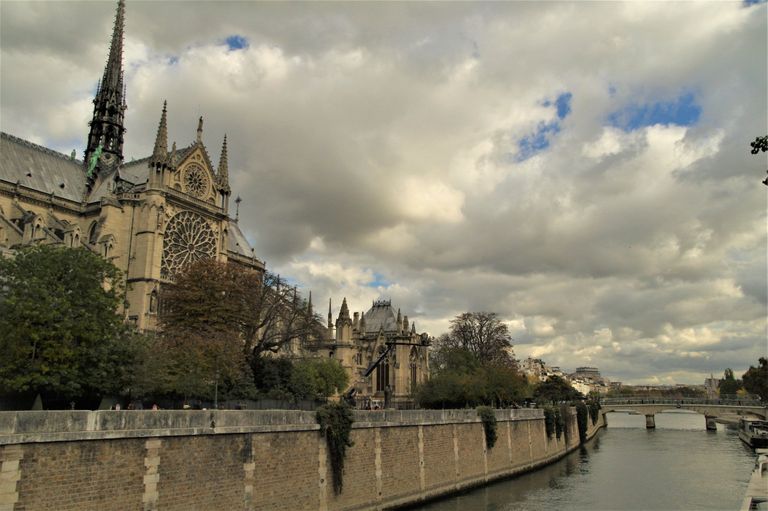
Source: Getty Images
These days, locals and tourists alike flock to this island to take a stroll along the banks of the River Seine, enjoy the scenery, and admire the landmarks and monuments that can be found here.
Dame De Coeur
The Notre-Dame Cathedral is an important landmark that carries quite the iconic legacy. From October 18 to 25, 2018, visitors gathered at the cathedral’s courtyard to watch the Dame de Coeur, a light and sound show featuring more than 80 projectors placed in and around the cathedral.
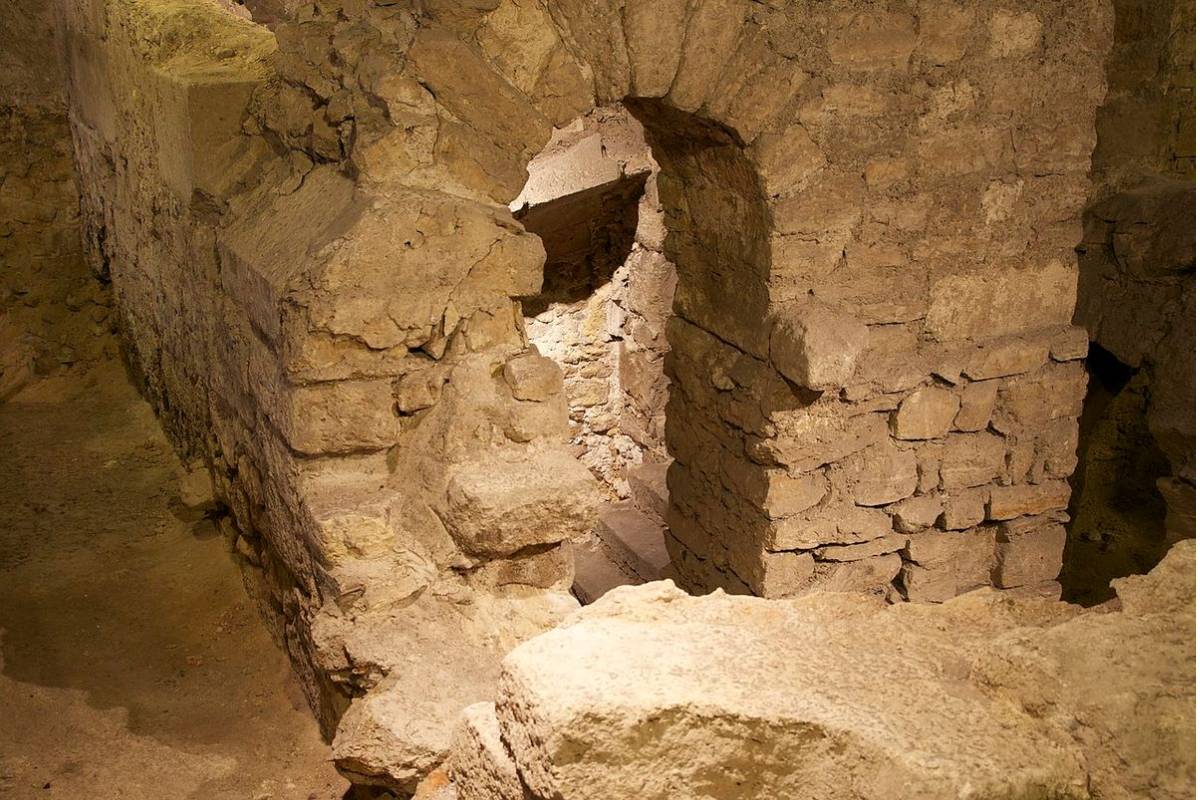
Source: Wikipedia Commons
Screenwriter and director Bruno Seillier was the creative genius behind the magnificent spectacle. The 25-minute show tells the story of a French nurse and an injured American soldier in World War I who fears dying before seeing the famed cathedral. To soothe him, the nurse tells him about the cathedral’s 850-year legacy.
View From Afar
It’s magical to see the Notre-Dame de Paris up close, but have you tried seeing it from afar? The cathedral’s imposing structure and stained glass windows make it a truly stunning sight to behold.
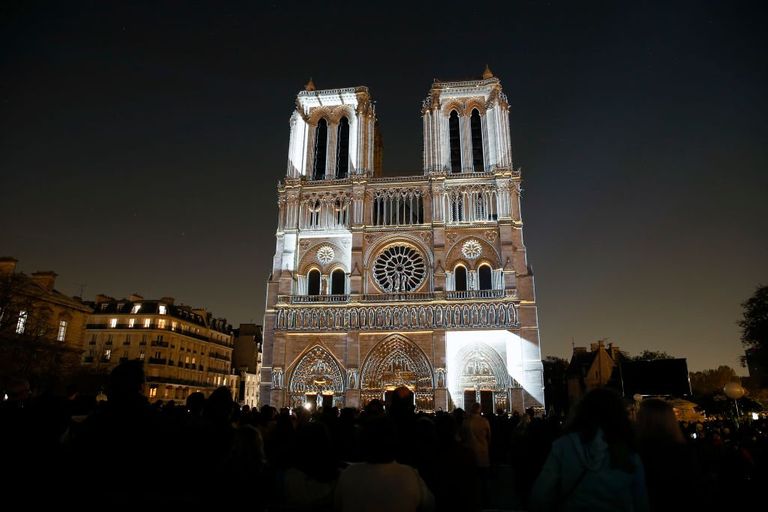
Source: Getty Images
You can appreciate this building’s beauty even more when you consider its surroundings. The sight of the imposing structure surrounded by trees and the picturesque River Seine brings to mind feelings of peace and tranquility.
The Interior
If you think the Notre-Dame de Paris looks beautiful from the outside, wait till you see what’s inside! The cathedral’s stone vaulted ceiling is designed to draw visitors’ gaze towards heaven. The rest of the cathedral’s interior, meanwhile, was built using priceless materials, with brilliant designs that are almost impossible to recreate.
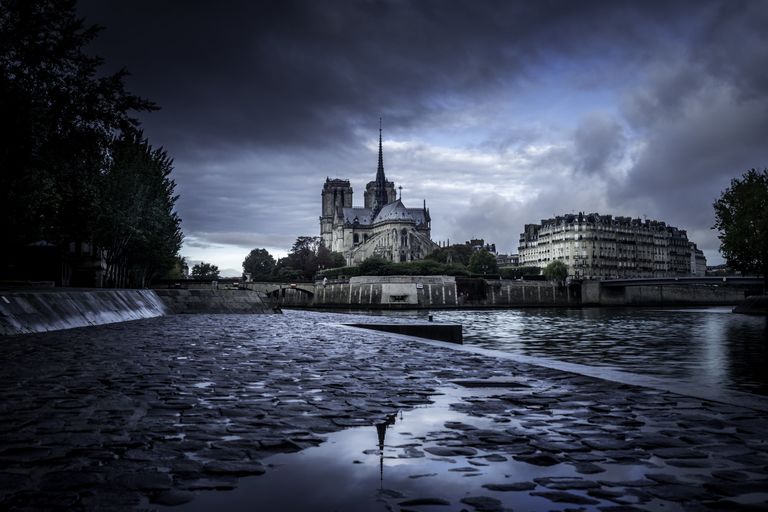
Source: Getty Images
The cathedral, a dedication to the Virgin Mary, can accommodate thousands of visitors at a time. Around 12 million people visit Notre-Dame every year, making it one of the most-visited landmarks in Paris. Who would have thought that this masterpiece would fall victim to a fire?
A Devastating Moment
The fire that largely destroyed the Notre-Dame Cathedral, one of the country’s most iconic landmarks, was indeed a tragedy. Hundreds of firefighters from Paris and the surrounding areas were dispatched to help extinguish the fire which lasted for 15 hours.
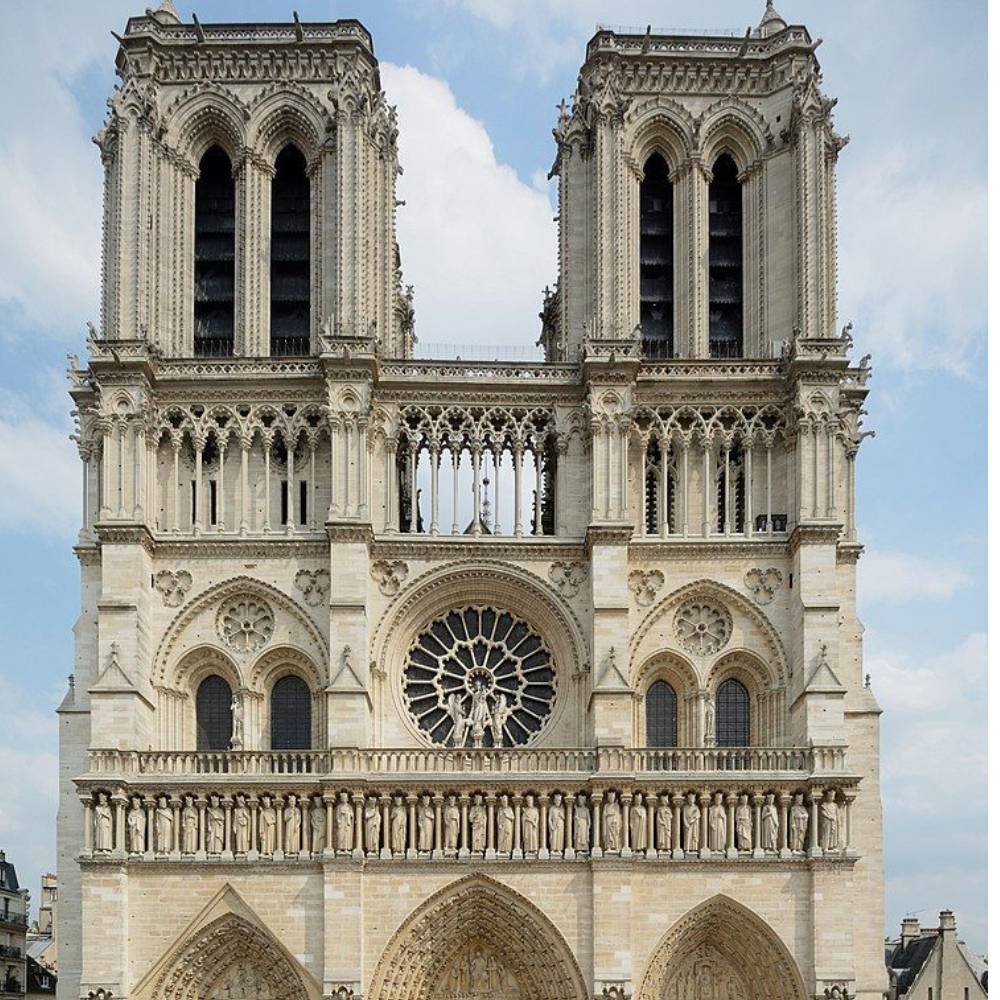
Source: Wikipedia Commons
The blaze left behind a ruin of scorched wood and melted lead. The cathedral, considered to be one of France’s greatest national treasures, had become a shadow of its former self. Aside from the structure itself, the fire also damaged paintings, sculptures, stained glass windows, and other precious artifacts inside the cathedral.
The Mays of Notre-Dame
Aside from Notre-Dame itself, the so-called “Mays” of Notre-Dame are some of the most intriguing attractions in Paris. The Mays are several paintings that were gifted to Notre-Dame in the 17th and 18th centuries. These paintings are displayed throughout the cathedral.
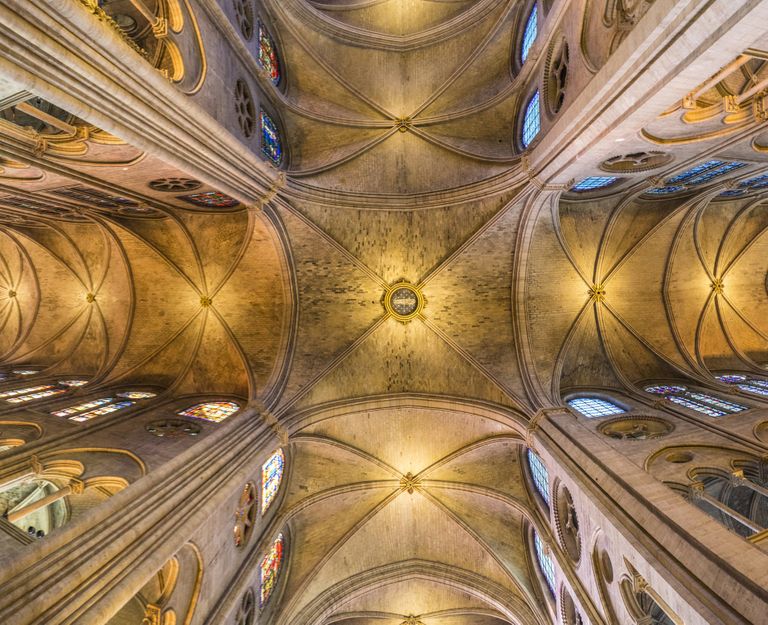
Source: Guido Cozzi/Atlantide Phototravel/Getty Images
One such painting is the La prédication de Saint Pierre à Jérusalem (The Preaching of Saint Peter in Jerusalem) by Chalres Poerson. Fortunately, its location prevented it from being heavily damaged by the fire, though some restoration work was still needed.
The Aftermath of the Fire
Following the fire, everyone’s focus shifted towards rebuilding the cathedral and restoring the works of art that were housed in the building. The cathedral, after all, had been an important symbol of the French capital for centuries.
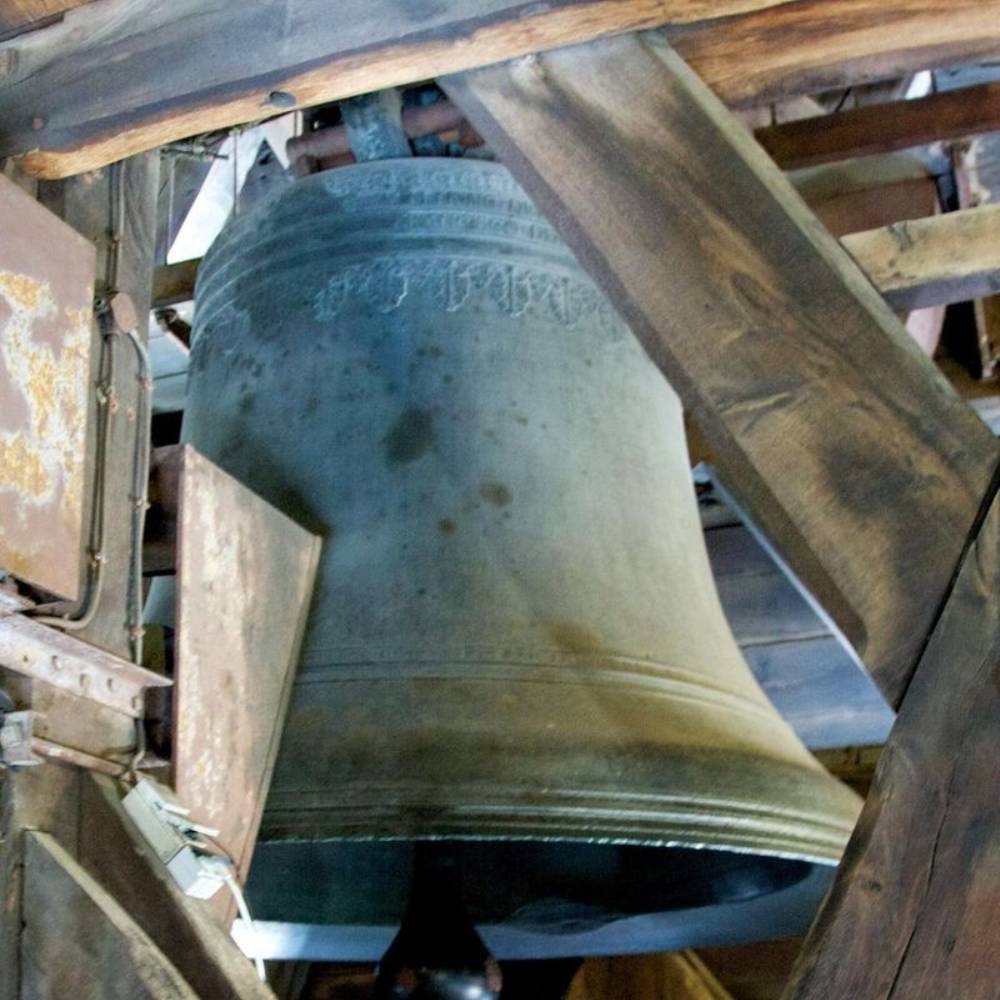
Source: Flickr
Of course, one question that needed to be asked was: what caused the fire? Some believe that it was caused by an explosion, while others suspect that the fire was caused by a discarded cigarette butt. Not long after the fire, investigators set to work to find out the truth.
Restoring Notre-Dame
Not long after the fire, a team of scientists at France’s Laboratoire de recherche des Monuments Historiques (LRMH) began assessing the damage. Clad in helmets and other protective gear, the team set out to examine the extent of the damage so they could plan the cathedral’s restoration accordingly.
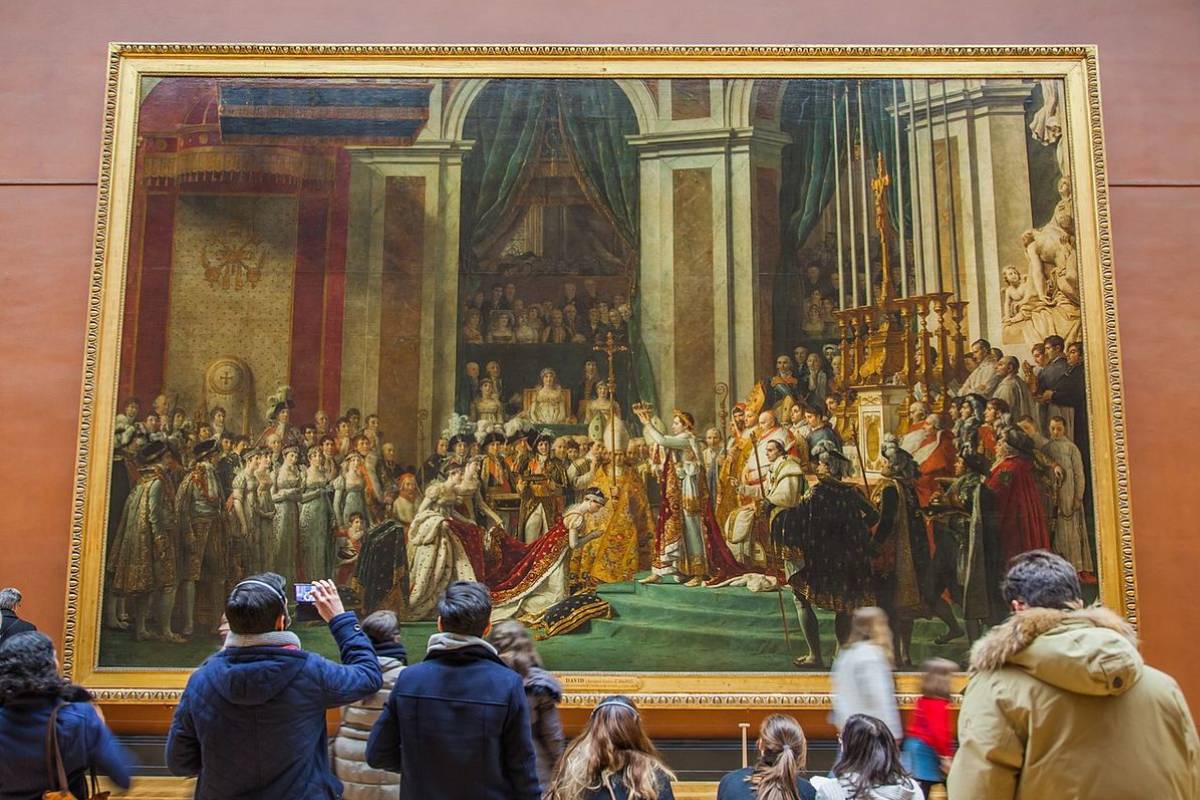
Source: Flickr
The LRMH team knew that rebuilding the cathedral would be a gargantuan task. After inspecting the ruins, the team came together to decide how they would go about the reconstruction. One suggestion was to combine old elements of the cathedral that had survived with newly-constructed ones, a symbolic way of looking back while looking towards the future.
A Horrifying Sight
The fire on the 15th of April, 2019 caught Parisians off guard. They never could have ever imagined that one of their city’s most famous landmarks would be destroyed in a matter of hours.
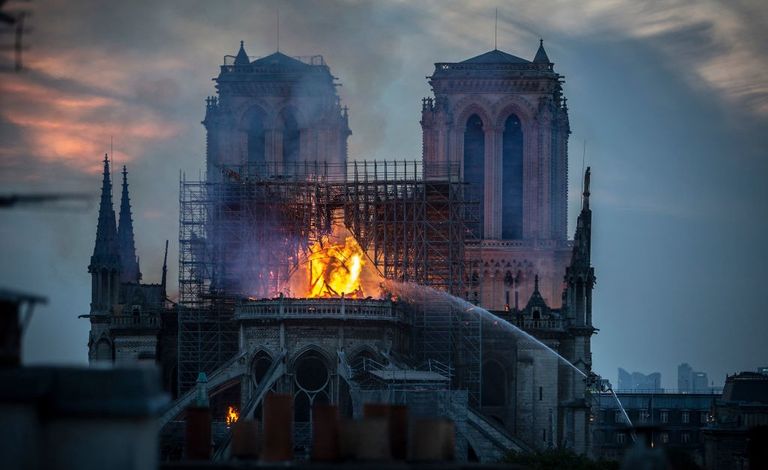
Source: Veronique de Viguerie/Getty Images
For those who had been tasked with looking after the cathedral, however, this was a disaster waiting to happen. Parts of the cathedral dated back to the 12th century and were in desperate need of repair. The cathedral’s caretakers could only watch in horror as the very thing they had feared unfolded before their eyes.
Notre-Dame’s Spire
The cathedral’s iconic spire symbolizes the church’s role as a beacon of faith and guidance. With a height of 96 meters (315 feet), the spire towers high above the rest of the buildings in the neighborhood.
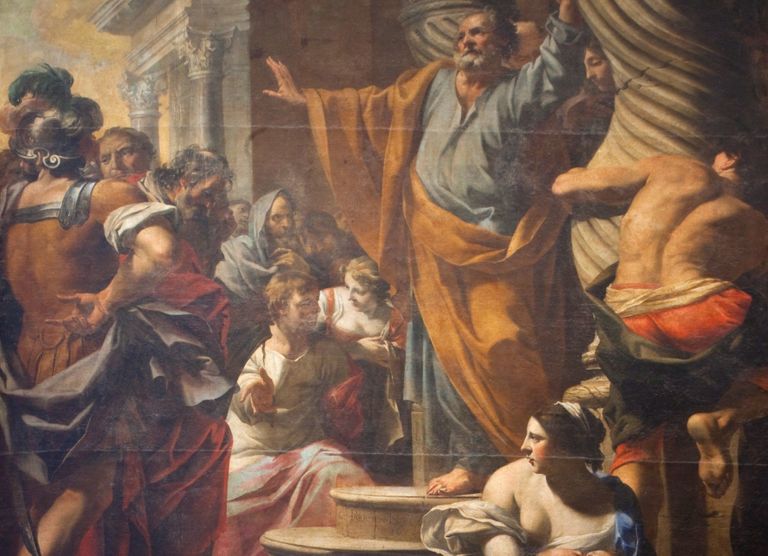
Source: Charles Poerson
Tragically, the spire collapsed during the fire. It also caused further damage to other parts of the cathedral as it came tumbling down. The spire’s oak beams, which date back to the 13th century, had largely dried out by then, posing a fire risk.
A Heartbreaking Loss
The sight of the centuries-old Notre-Dame in flames broke the hearts of millions around the world. Not long after the fire was finally put out, organizations and individuals worldwide began offering to help reconstruct the cathedral and restore the precious artworks and artifacts that were damaged.
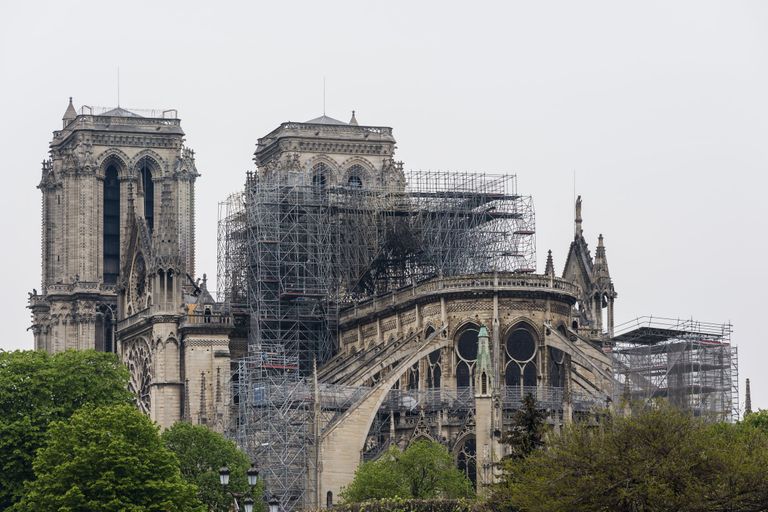
Source: no_limit_pictures/Getty Images
French President Emmanuel Macron launched an international fundraising campaign on the night of the fire. Bernard Arnault, a French businessman, donated $200 million. A year after the fire, Germany offered the services of three skilled tradesmen to help restore some of the cathedral’s large clerestory windows.
How the Fire Started
The fire broke out at 6:18 PM in the attic located beneath the cathedral’s roof. Two minutes later, the fire alarm sounded, which prompted guards to evacuate the cathedral. One guard was sent to investigate the fire but ended up in the wrong location.
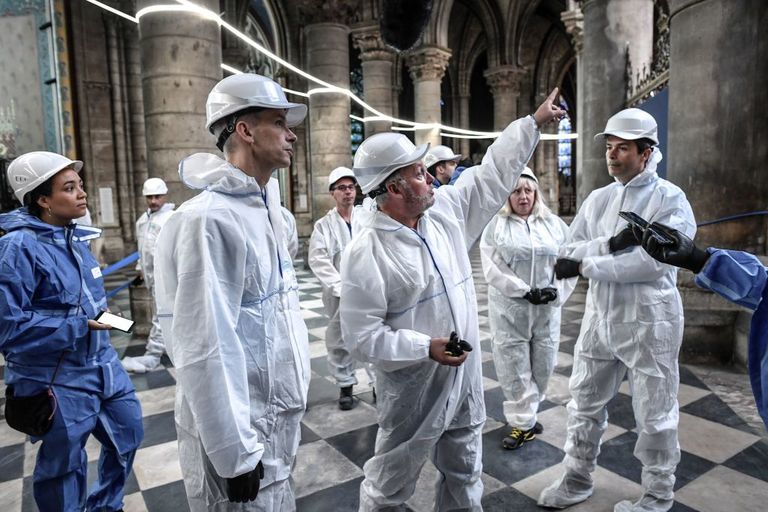
Source: Getty Images
It would take several more minutes before this error was discovered. By the time the guard managed to reach the cathedral’s attic, the fire had already spread. The fire brigade was notified of the blaze at 6:51 PM, and the first firefighters arrived at the scene ten minutes later.
Dousing the Flames
To minimize the potential damage to the cathedral, firefighters doused the flames from inside the structure. Applying water from outside would have been safer for the personnel, but this carried the risk of deflecting flames and hot gases inwards.
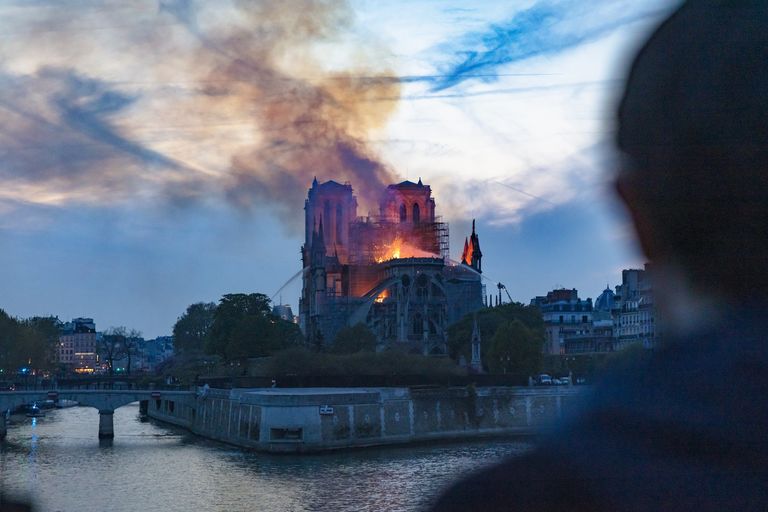
Aziz Ary Neto/Getty Images
The fire brigade also thought it would be best not to use aerial firefighting since water dropped from heights could cause structural damage. Deluge guns were used but at a much lower pressure than usual.
Statues on the Roof
Just days before the tragic fire, sixteen statues on Notre-Dame’s roof were taken down as part of the ongoing renovation works at the cathedral. Statues depicting the Twelve Apostles and four New Testament evangelists were being kept in a warehouse in southwestern France for cleaning.
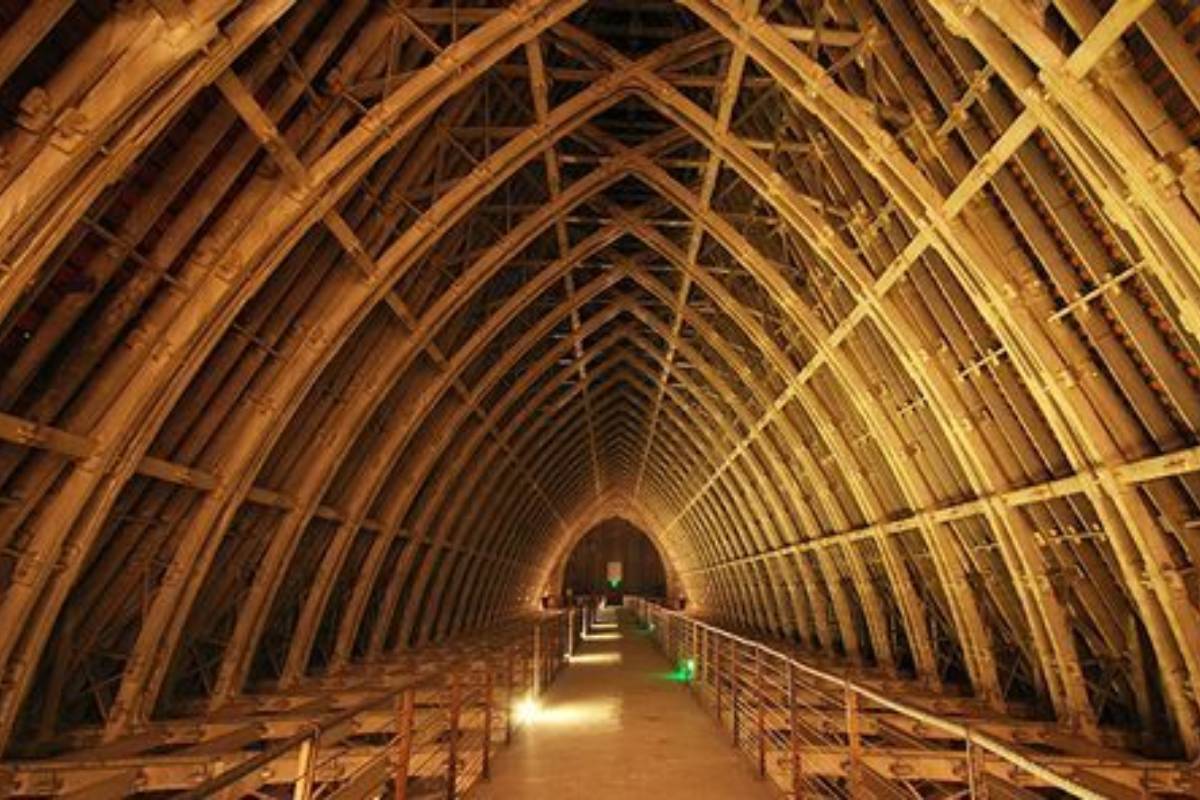
Source: Pinterest
Unfortunately, not all statues on the cathedral’s roof were spared. A copper rooster that topped the spire, for instance, was found amidst the rubble a few days after the fire. The rooster contained numerous relics, including one of 70 thorns on the crown of thorns worn by Jesus Christ.
The Gargoyles
Even if you’ve never visited Notre-Dame yourself, you’ve probably heard of its famous gargoyles. The cathedral’s gargoyles aren’t just decorative statues – they also protect the cathedral from damage caused by rainwater by redirecting rainfall away from the rooftop.
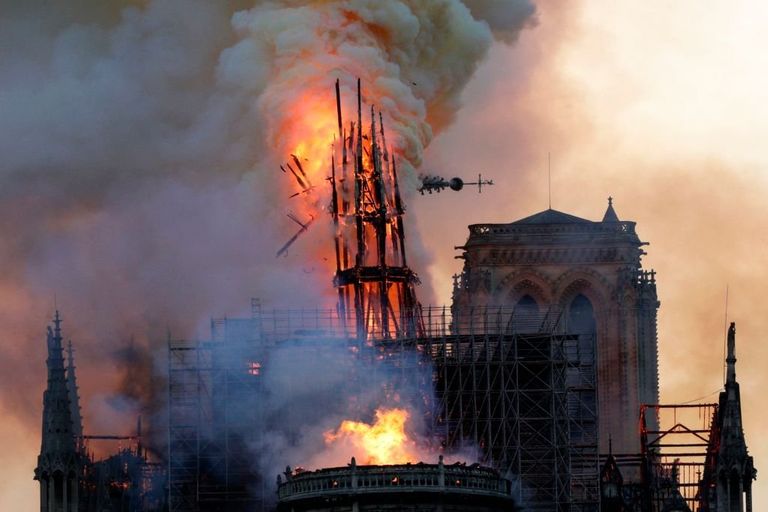
GEOFFROY VAN DER HASSELT/AFP via Getty Images
Unfortunately, many of Notre-Dame’s Gargoyles were heavily damaged by the fire. In April of 2021, a nonprofit organization called the Friends of Notre-Dame de Paris launched a fundraising scheme that would allow people to sponsor the restoration of specific artworks, artifacts, and gargoyles that were destroyed in the blaze.
The Sacristy
The sacristy is where many of the Notre-Dame de Paris’s treasures are stored. It is also where priests prepare for celebrations and services. The sacristy, located adjacent to the cathedral, was built on the site of a chapel built in 528 AD by the Merovingian King Childebert.
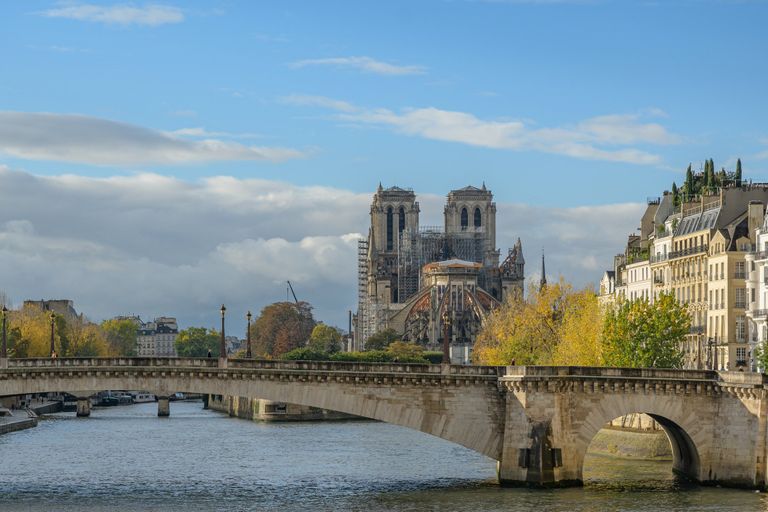
Malcolm P Chapman/Getty Images
The relics and other items that were stored in the sacristy were largely undamaged by the fire. Some of these include precious materials used in the liturgy: gold, silver, textiles, and rare adornments, as well as the altar table.
Watching the Disaster Unfold
One of the first eyewitness reports of the fire came from Twitter user @khentekas who tweeted a video of black smoke billowing out of Notre-Dame. As word of the fire began to spread, newsrooms scrambled to send reporters to the scene.
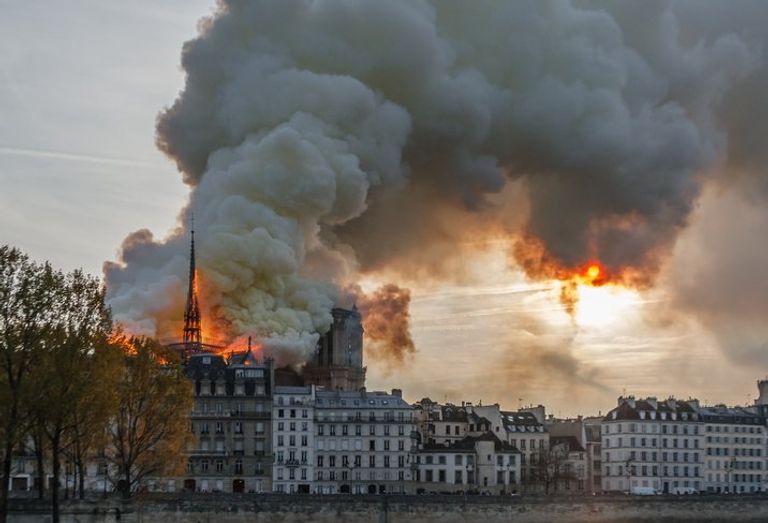
Hans Zimmermann/Getty Images
Parisians, meanwhile, gathered in nearby plazas and street corners. Some were taking photos and videos of the fire, while others called their loved ones. As news outlets around the world showed live footage of the fire, people began sharing photos of their past visits to Notre-Dame.
Firefighters on the Move
More than 400 firefighters from all over Paris and the surrounding areas took part in the battle to save Notre-Dame. Additionally, around 100 government workers and police officers formed a human chain to move precious objects to safety.

Stephan Loeber-Bottero/EyeEm/Getty Images
According to Maxime Cumunel of the Observatory for Religious Heritage, around five to ten percent of the artwork and treasures inside the cathedral were destroyed. However, a lot more could have been destroyed if not for the heroic efforts of the rescue workers and all those who volunteered to help.
Honoring the Firefighters
Fortunately, no one was killed in the blaze. Cathedral guards swiftly evacuated those who were inside Notre-Dame as soon as the alarms sounded, and firefighters were quick to clear the area when they arrived. However, three emergency workers suffered non-fatal injuries while putting out the fire.
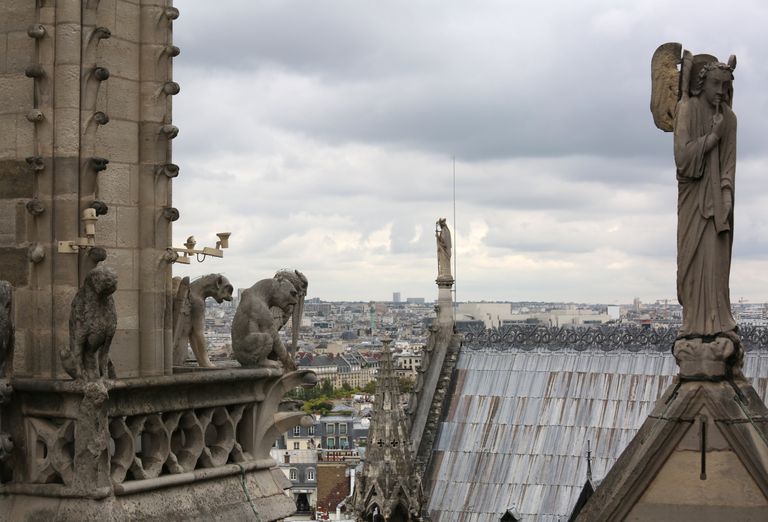
ChiccoDodiFC/Getty Images
Days after the fire, Michel Aupetit, the Archbishop of Paris, honored the firefighters during Sunday Mass at Saint-Eustache Church. He also handed them a book of scriptures that was saved from the fire. President Macron, meanwhile, invited firefighters to a special gathering at the Élysée presidential palace to share “words of thanks.”
After the Fire
When the sun rose the next morning, the extent of the damage caused by the fire became clear. Two-thirds of the cathedral’s roof was destroyed, while its 19th-century spire had disappeared. Piles of debris were scattered around the cathedral, and the smell of smoke hung in the air.

MarkSkalny/Getty Images
Following the fire, President Macron announced that the iconic cathedral would be rebuilt in time for the 2024 Summer Olympics. Some architects, however, said that rebuilding the church could take as much as 20 to 40 years given the amount of work that needed to be done.
World Leaders Weigh In
World leaders offered their condolences to President Macron and the people of France in the days and weeks following the fire. Prince Charles called the cathedral a “treasure for all mankind,” while Queen Elizabeth II expressed her admiration for the firefighters who risked their lives to save one of France’s most important monuments.
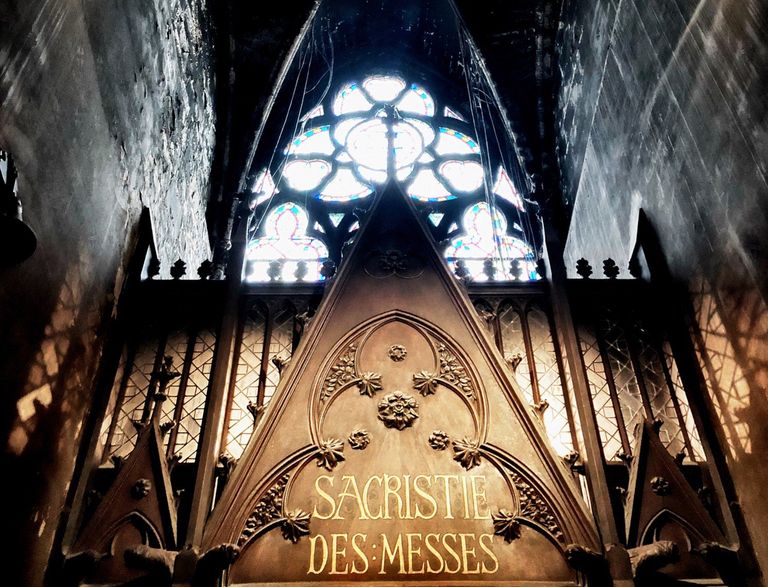
Michelle Reynolds/Getty Images
South Korea’s president Moon Jae In sent a telegram to President Macron to express his deep regret over the damage caused by the fire. On his Twitter account, he described the cathedral as “a very important treasure of humanity” and said that the tragedy was “a loss for people all over the world.”
Preventing Further Destruction
As the world mourned Notre-Dame’s destruction, the LRMH team led by Aline Magnien headed to Notre-Dame to inspect the cathedral’s ruins. Upon seeing the cathedral’s condition, they knew that their first task would be to prevent any additional destruction from happening.
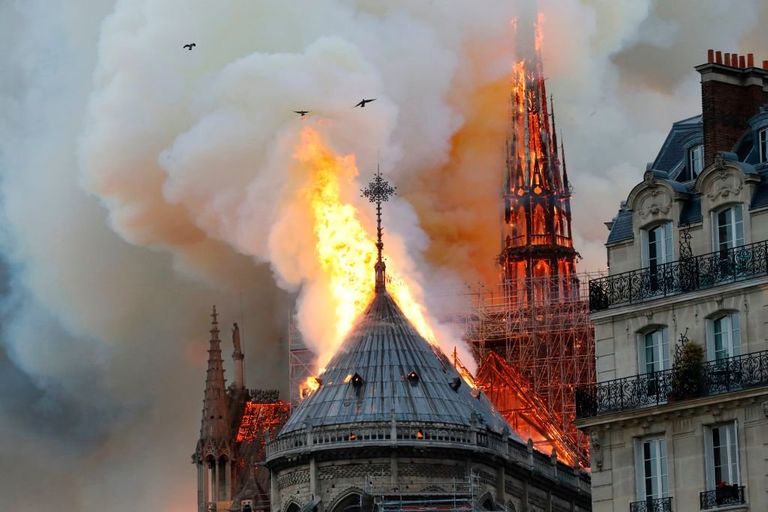
FRANCOIS GUILLOT/AFP via Getty Images)
From the very beginning, the LRMH team knew they would face many roadblocks. For instance, the team struggled to reach Notre-Dame’s damaged stonework. To do this, they needed to climb onto the top of the vault. However, doing so could potentially cause the entire structure to collapse.
Inspecting the Ruins
To figure out how unstable the cathedral’s ruins were, the LRMH team looked at the color of the stonework. According to experts, the colors of the individual stones change depending on the temperature they had been exposed to.
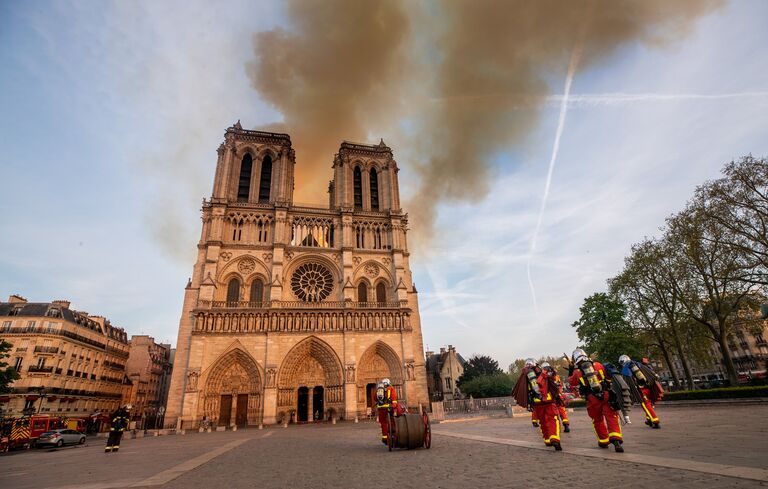
Benoît Moser/Getty Images
When exposed to temperatures between 570°F and 750°F, the iron inside would decompose and leave behind a layer of red. As the temperature rises, the color would become darker and darker. At 1,500°F, the stones turn to powder. This was how researchers determined how sturdy individual stones were.
More Problems
Another problem for researchers is the amount of water that managed to make its way into the cathedral. Firefighters tried their best not to aim their water jets at the stained glass windows, but they could not do the same to the vaulted ceiling and limestone walls as these were heavily affected by the fire.
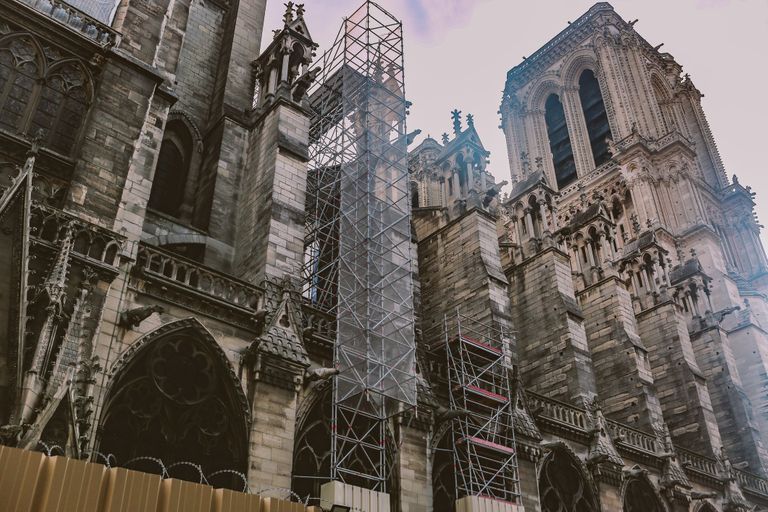
Erika Parfenova/Getty Images
As the ceiling and limestone walls absorbed the water, their weight drastically increased. The water in the stones would also expand and contract depending on the temperature, which put the ruins at greater risk of collapse. Even a year after the fire, the water still hadn’t completely dried out.
The Stained Glass Windows
The Notre-Dame has several stained glass windows, but its most famous ones are the three rose windows that date back to the 13th century. The west rose window was made in 1225, while the north rose window was created in 1250. The south rose window was made ten years later.
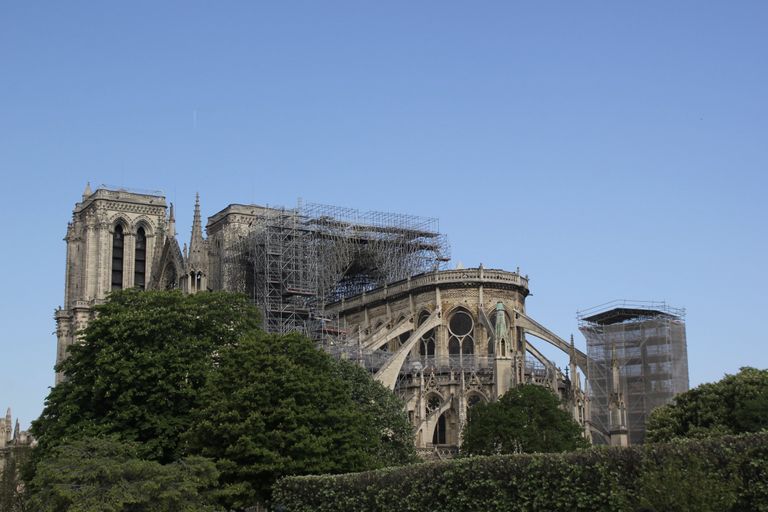
Laura Kalcheff/Getty Images
When researchers took a closer look at the cathedral’s stained glass window, they discovered that the lead joints of some of the 19th-century windows had melted. However, the three rose windows survived the blaze. Another window, meanwhile, was weakened and had to be dismantled for safekeeping.
The North Rose Window
The Notre-Dame’s north rose window is one of the most striking features of the cathedral’s facade. The rose window, designed by Jean de Chelles, tells the story of the Virgin Mary and the birth of Christ.
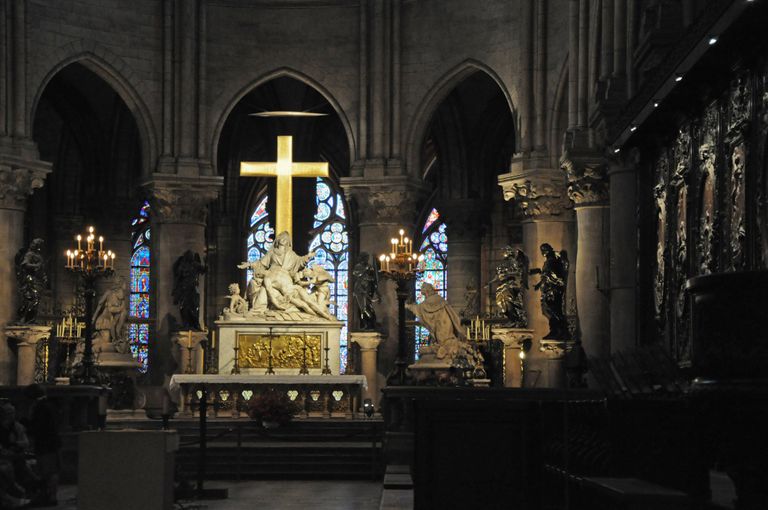
View Stock/Getty Images
The mother and child are surrounded by doves and angels. These are then encircled by 12 prophets, who are in turn encircled by 12 flowers (fleur-de-lis), the symbol of both France and the Virgin Mary. The outer layer then shows 12 more prophets.
The Investigation
On the 16th of April, 2019, the Paris prosecutor ruled out the possibility that the fire was a deliberate act. The cathedral had been under renovation at the time, and investigators believe this may have increased the risk of fire due to short circuits, sparks, and heat from welding.
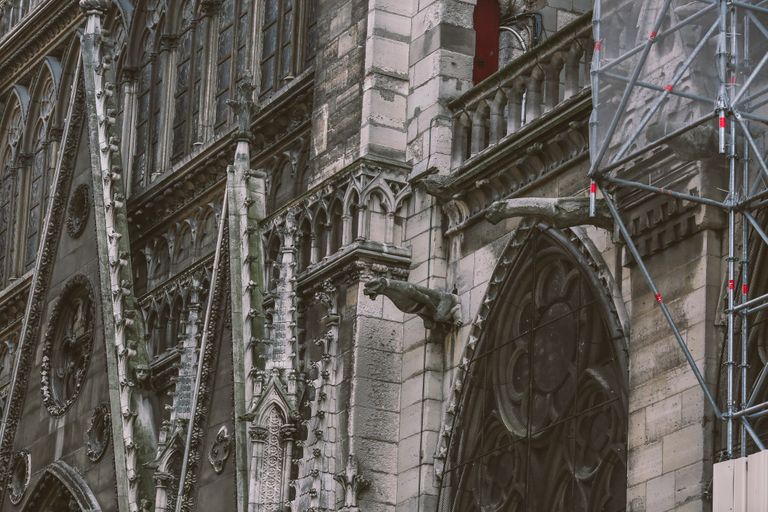
Erika Parfenova/Getty Images
The firms working on the cathedral’s restoration were then questioned by authorities during the investigation. One company whose employees were the only ones working on the day of the fire said that no soldering or welding was going on before the fire.
The Cause of the Fire
After cigarette butts were found on the scaffolding, investigators began considering the possibility that the fire was caused by a cigarette. Another firm working on the restoration admitted that some of its employees had smoked cigarettes while working, but they denied that an improperly-discarded cigarette butt was what started the fire.

Daniele Schneider/Getty Images
By April of 2020, investigators were convinced that the fire could have been caused by either a cigarette or a short circuit in the electrical system. On the 15th of April, 2021 – the second anniversary of the fire – an inquiry into the blaze suggested that six electronic bells that had been installed in the spire may have short-circuited, starting the fire.
Contradicting Claims
After the fire, Parisians grew concerned that the lead from the cathedral’s roof had contaminated the areas surrounding the cathedral. Aurélia Azéma, a section chief at LRMH, assured residents that the fire’s temperature did not reach the temperature required to reduce the material to gas. Some experts who had inspected the ruins also claimed that most of the melted lead had also remained in the cathedral.

CHRISTOPHE PETIT TESSON/AFP via Getty Images
However, pictures and videos that were taken during the fire clearly showed a yellow haze forming over the cathedral. Other experts also refuted Azéma’s claims, saying that the fire did exceed the temperature required for lead to combine with oxygen.
Lead Poisoning Fears
Between the contradicting claims and the evidence of the yellowing haze, the public became increasingly concerned about whether or not lead poisoning was a real worry in the areas around the cathedral.
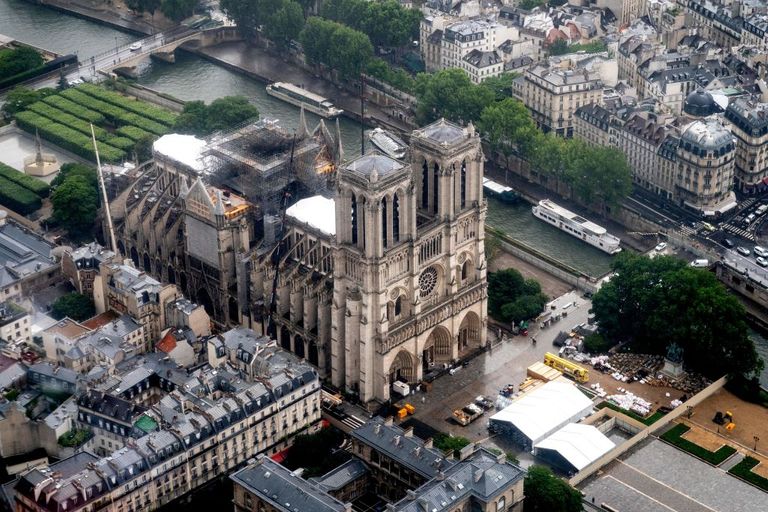
LIONEL BONAVENTURE, AFP/Getty Images
The Montmartre district is about six kilometers away from Notre-Dame. While there is no proof of lead contamination in this neighborhood, residents suspect that the Notre-Dame fire is to blame for the higher lead poisoning rates in the area.
Experts’ Findings
Authorities did not test the areas around Notre-Dame for weeks. When they finally did, it was discovered that many buildings – including schools, police stations, and recreational areas – had significant levels of lead. In some cases, experts found traces of lead up to 70 times the recommended limit.
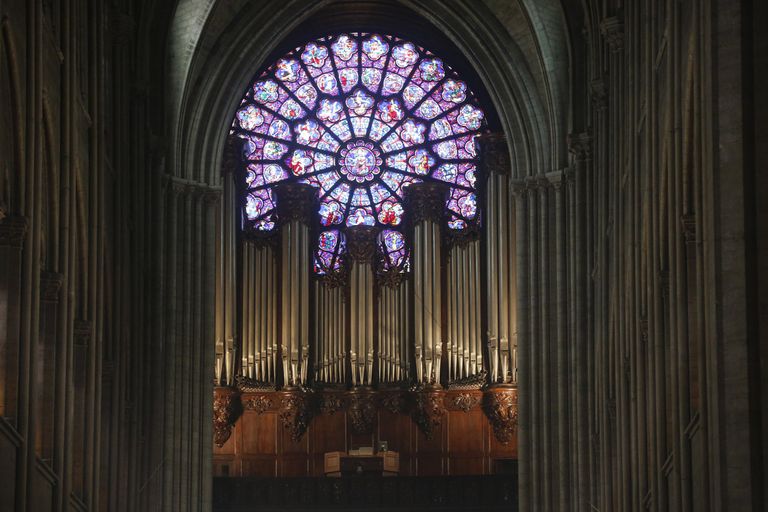
Godong/Getty Images
These findings alarmed many experts. Exposure to large quantities of lead can be toxic. It has also been linked to many physical, neurological, and behavioral issues, and is believed to cause infertility, seizures, and – in some cases – death.
Cover-up Allegations
As the experts’ findings became known to the public, rumors of a cover-up by officials started circulating. The New York Times also published a report saying that authorities had known about the dangerous levels of lead released by Notre-Dame within a few days after the disaster, but did not act on it.
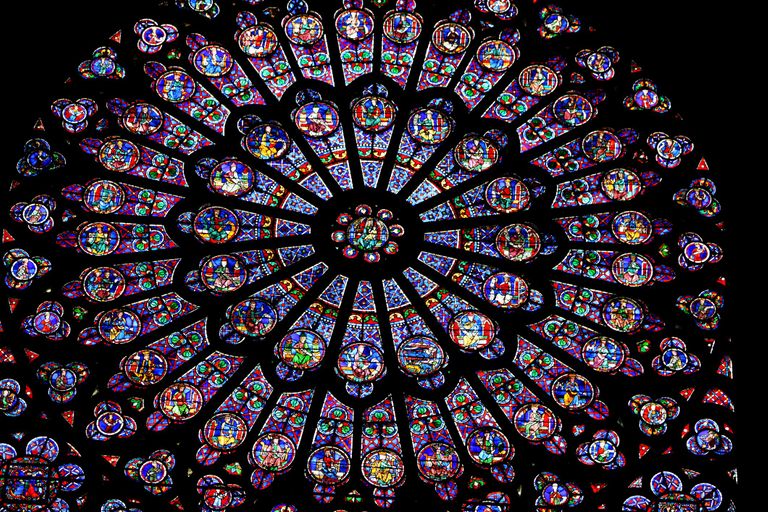
AnkNet/Getty Images
A few months after the fire, representatives from Robin Hood, a French environmental organization, announced that experts found traces of lead 20 times the recommended limit at a residential building one mile away from Notre-Dame. At that point, it had become clear that this was a much bigger issue than anyone had thought.
More Startling Revelations
Naturally, traces of lead would also be found throughout the cathedral itself, including inside the pipes of an organ. The LRMH also tested surfaces made from oak and other materials and found traces of lead up to 70 times the recommended limit.
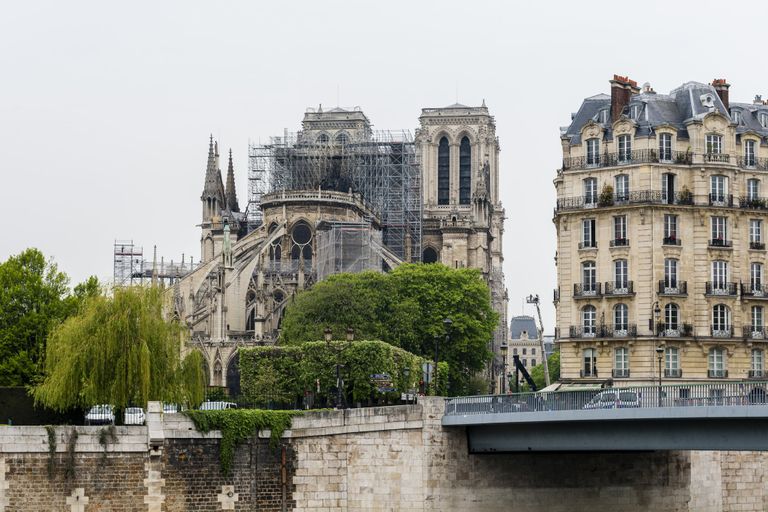
no_limit_pictures/Getty Images
Following this discovery, those working in the cathedral were now required to wear protective clothing at all times. They also had to submit to meticulous decontamination procedures. Researchers were also now only allowed to stay inside the cathedral for up to two and a half hours, and they must throw away any disposable garments after leaving the premises.
More Testing Needed
However, some experts suspect that toxic lead might have been leaking from Notre-Dame for hundreds of years. It is believed that the rain may have washed toxic lead from the roof into the River Seine, contaminating large sections of Paris and the surrounding regions.
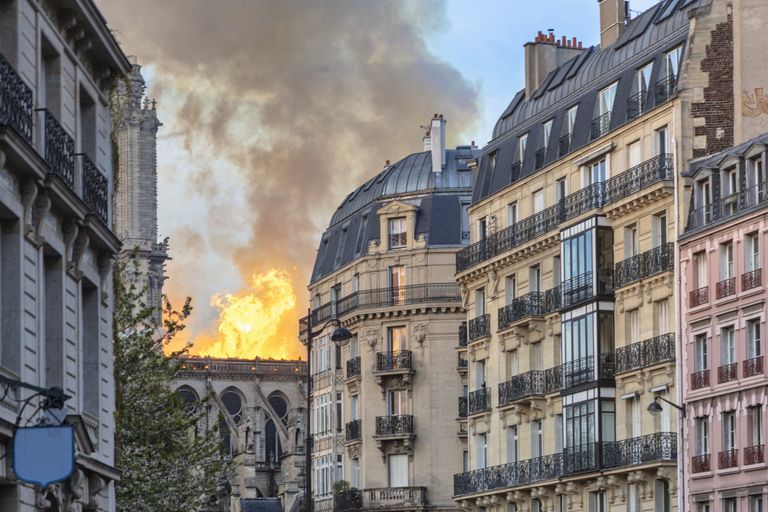
Aziz Ary Neto/Getty Images
Furthermore, scientists are also looking into the possibility that there may be other factors affecting the lead levels throughout Paris, including toxic paint and gasoline. In an interview, scientist Sophie Ayrault said that she plans to compare lead samples taken at the cathedral and in other parts of the city to determine how much of it could be traced to the 2019 fire.
Looking Towards the Future
In the meantime, the LRMH team has been trying to figure out ways to remove any traces of lead from Notre-Dame. Some of their proposed solutions include deploying lasers to cleanse the cathedral’s stone walls or using a dough-like material to extract the lead. Véronique Vergès-Belmin of the LRMH, however, believes that the process will likely require them to try a series of different techniques.
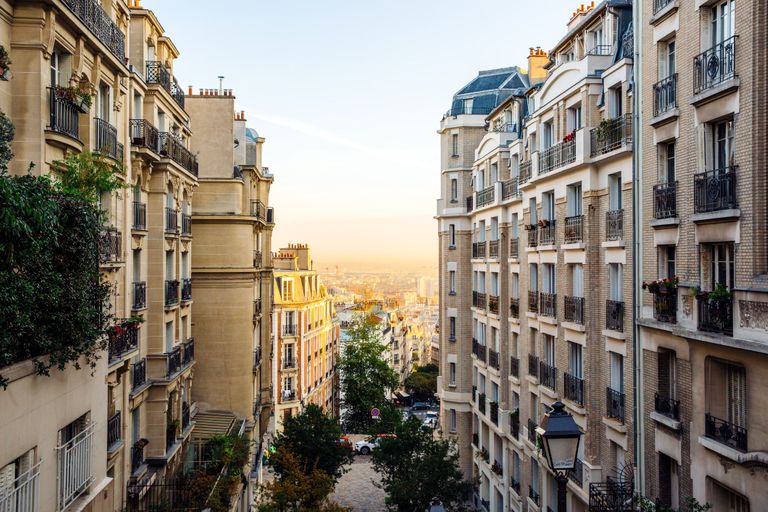
Alexander Spatari/Getty Images
The LRMH team remains optimistic that Notre-Dame will be restored to its former glory. President Macron, meanwhile, believes that the cathedral will be rebuilt “more beautiful than before.” However, if it can be proven that lead from the cathedral had been contaminating parks and schools in Paris for hundreds of years, then its legacy may be forever tainted.
Tuileries Garden
Tuileries Garden, located not too far away from Notre-Dame, is a popular stopover point for tourists traveling to and from the cathedral. The park was created in 1564 as the garden of the Tuileries Palace before eventually becoming a public park after the French Revolution. The park, considered by many as one of the most beautiful in Paris, attracts thousands of visitors daily.
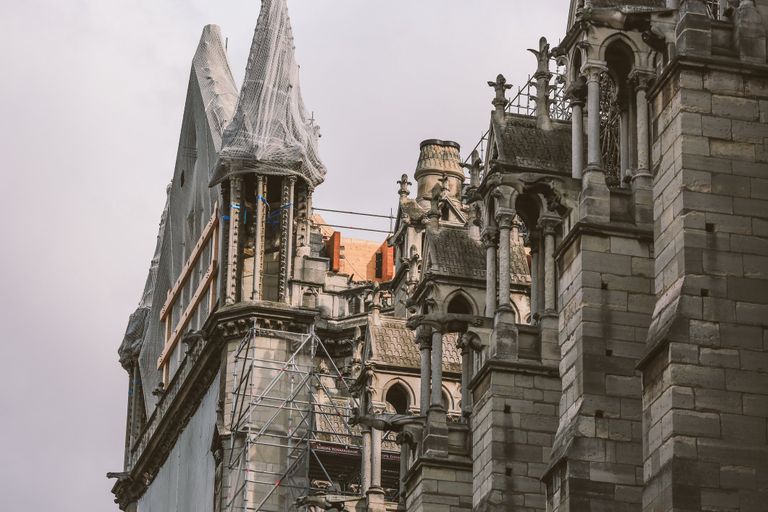
Erika Parfenova/Getty Images
Just like the Notre-Dame de Paris, the Tuileries Garden features several sculptures. Some of the notable sculptures at the park include Theseus and the Minotaur by Jules Ramey (1821), Nymphe by Louis Auguste Lévêque (1866), and Le Baiser (The Kiss) by Auguste Rodin (1882). Could this beautiful garden also be a victim of high lead level?
The Komsomolets
The Notre-Dame de Paris isn’t the only entity from which hazardous chemicals may be leaking. The Soviet nuclear submarine Komsomolets sank to the bottom of the Barents Sea in April of 1989. The submarine, according to experts, has the potential to spill lethal pollution into the Barents Sea.
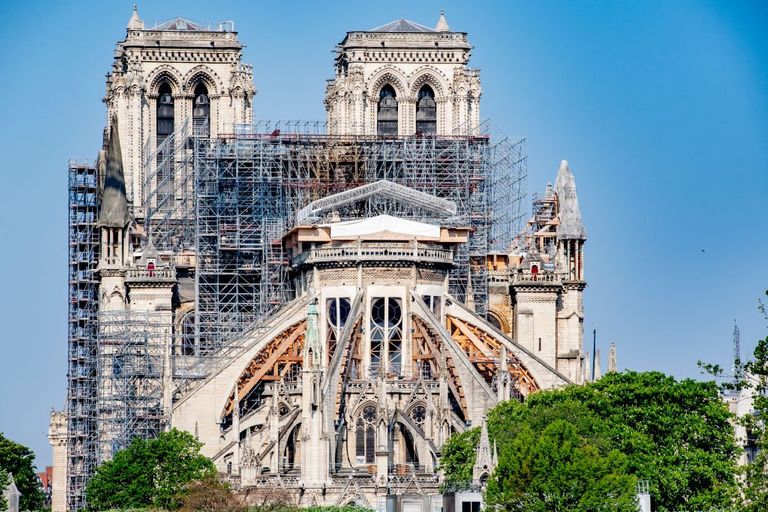
Robin Utrecht/Echoes Wire/Barcroft Media via Getty Images
The Komsomolets, a state-of-the-art Project 685 Plavnik submarine, had been carrying out its duties underwater for more than a month when disaster struck. A huge fire had broken out inside the sub, causing electrical problems. 27 crew members who used an escape capsule survived, but the remaining 42 on board were killed.
Contamination Concerns From The Cold War
The Komsomolets disaster happened during the Cold War, a period of geopolitical tension between the Soviet Union and the United States and their respective allies. The Komsomolets was a key part of the nuclear arms race that developed between the bitter rivals.
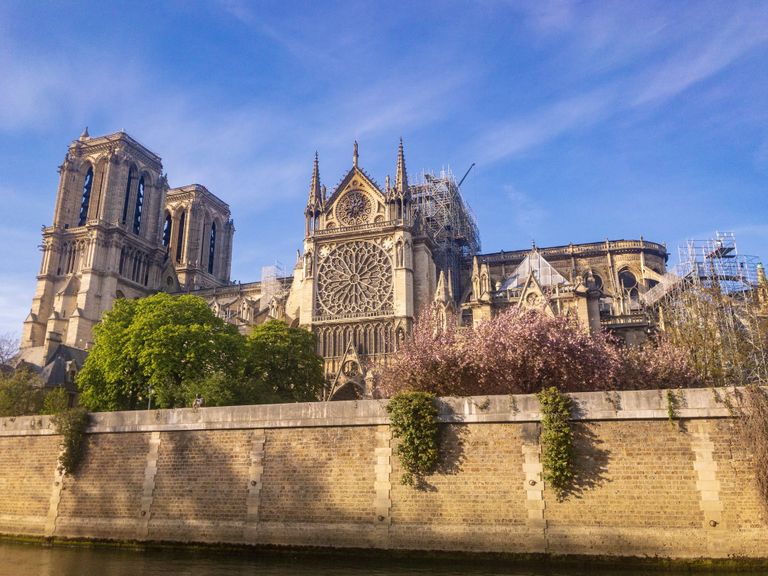
OnickzArtworks/Getty Images
The year that the sub was launched, nuclear submarines had been a weapon of choice by both the Soviets and the Americans in the Cold War. However, it was the Americans who first successfully developed submarines powered by nuclear reactors. A researcher at the US Naval Research Laboratory named Ross Gunn worked on the concept as far back as 1939.
Future Risks
The Komsomolets had been carrying two nuclear weapons containing plutonium when it sunk. Aside from that, there was also the nuclear reactor that powered the sub. After the disaster, the Soviet Union came under intense pressure to recover the hazardous materials from the wreckage. The Soviets, however, maintained that the risk of radioactive material damaging the ocean was minimal.
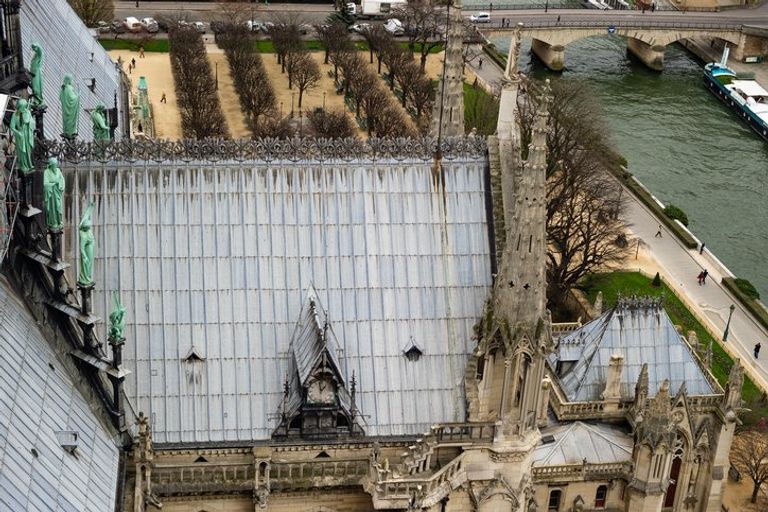
MarkSkalny/Getty Images
In 1994, it was discovered that plutonium had leaked out through cracks on the sub’s hull. It would take about two years before this issue would be resolved. Another expedition to the wreckage in 2019 found that there was still little danger of contamination. Similar to the Notre-Dame lead concern, further tests will be needed to monitor the true risk level.
Notre-Dame and The Komosomolet
The high lead levels from the Notre-Dame fire and the plutonium contamination from the Komosomolet both serve as warnings of how hazardous chemicals from the past may accidentally be released around civilization. What does this mean for the future?

LIONEL BONAVENTURE/AFP via Getty Images
We must be more environmentally conscious of what we build and create. Now is the time to find decontamination solutions to prevent such incidents from continuing in the future. Hopefully, with time and tests the LRMH team can rid the cathedral of lead and restore Notre-Dame to its proper glory.
